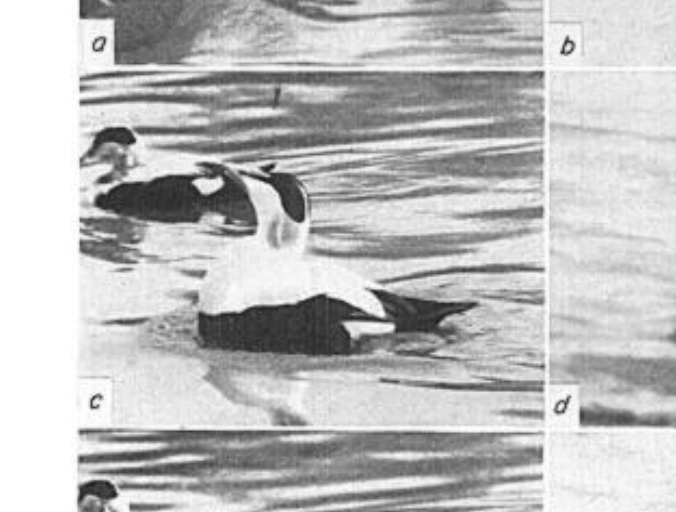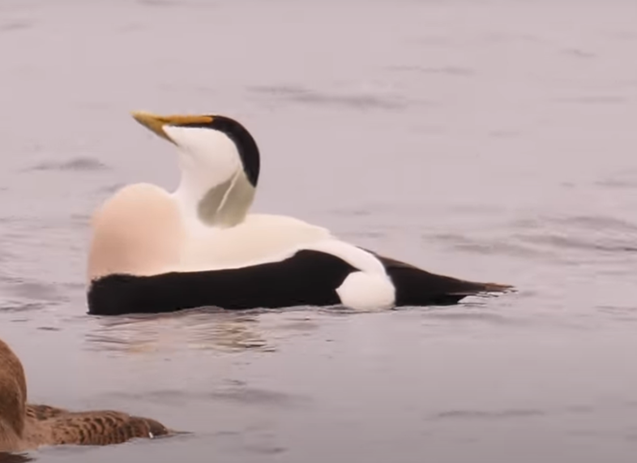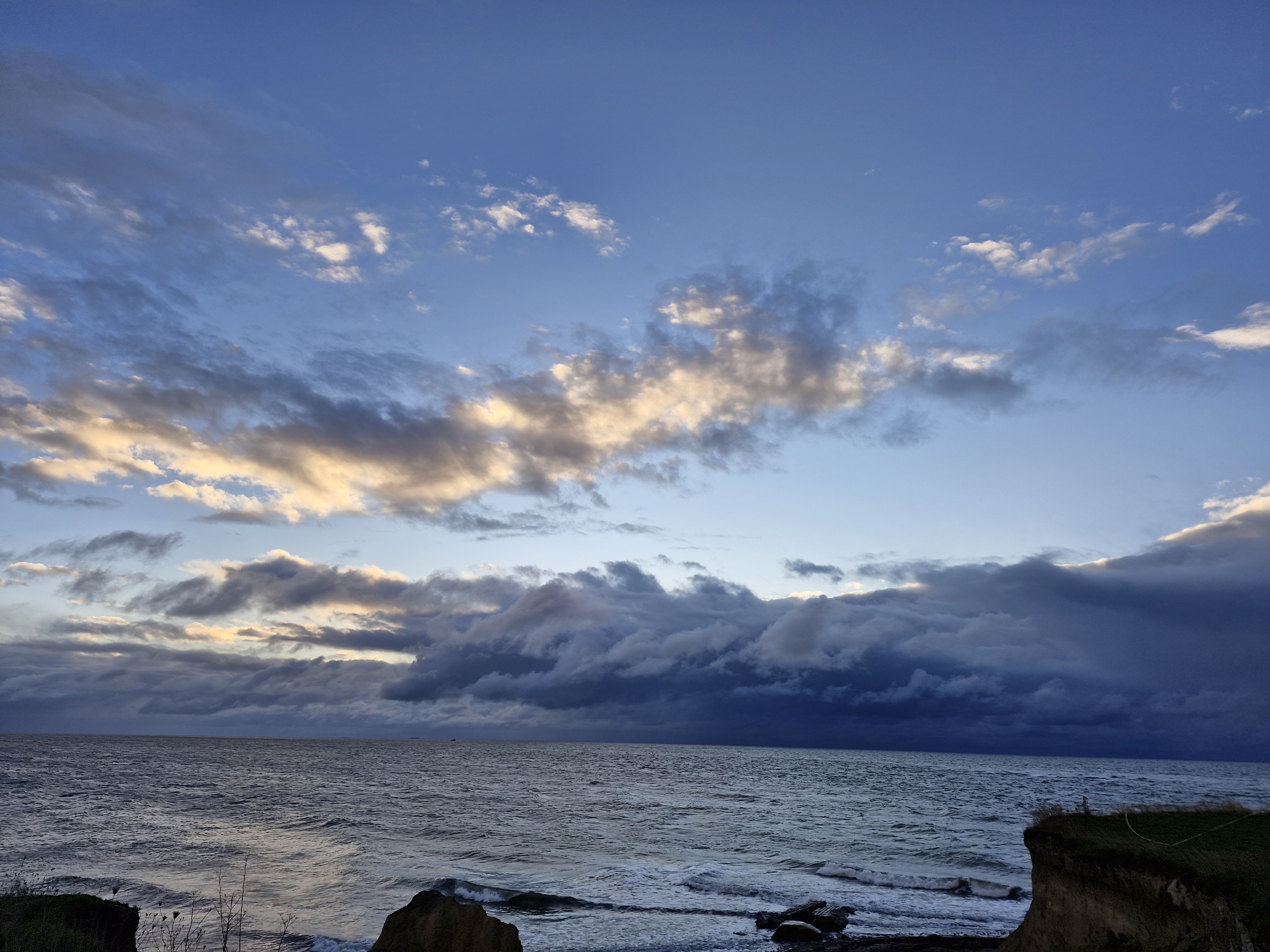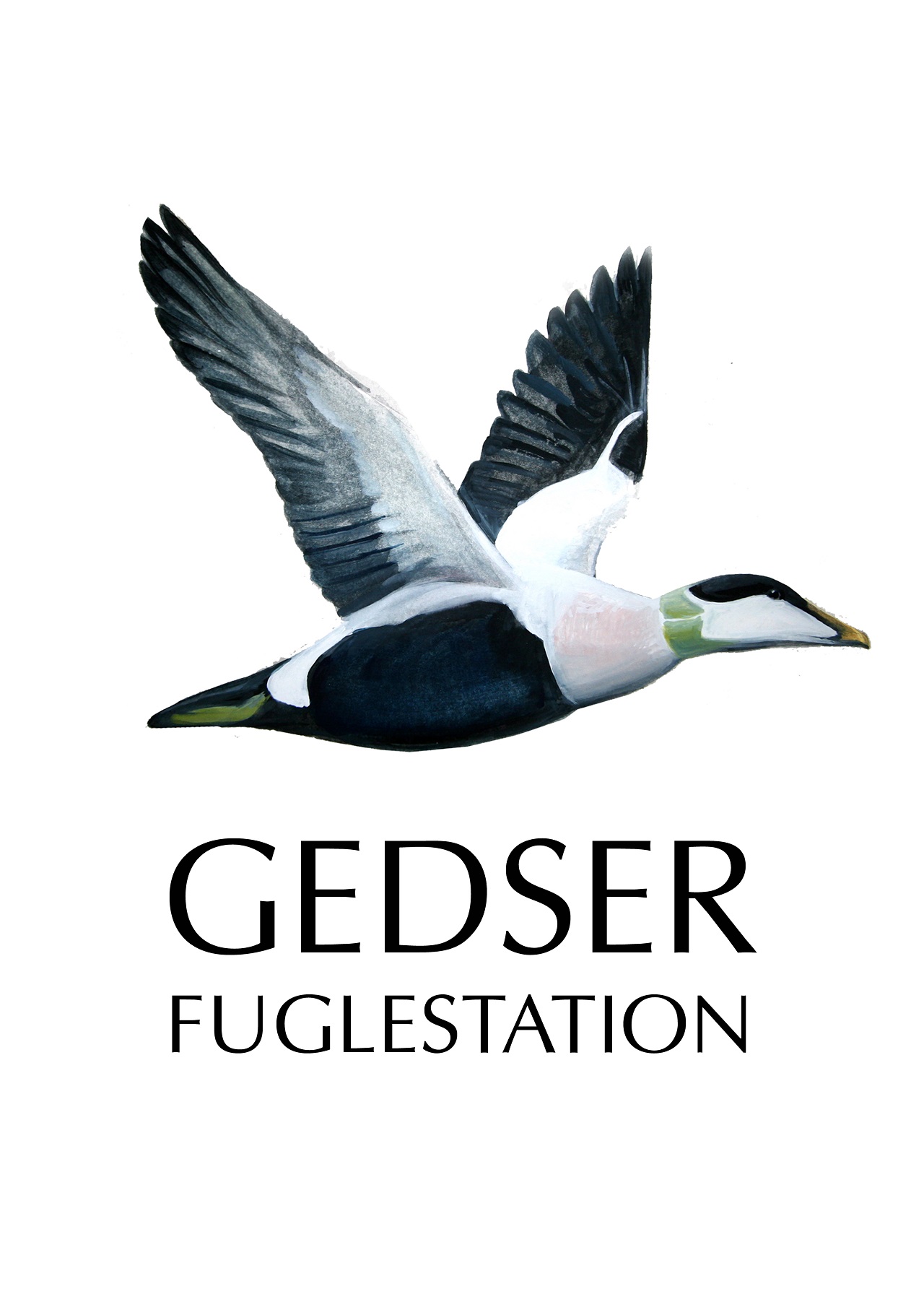Gedser Fuglestation Blog
Her på Gedser Fuglestations blog bringes korte nyheder i dagbogsformat om hændelser på fuglestationen.
Eiders Display
Ringmærkningen:
Da nettene skulle op regnede de, så de kom først op 7.30. Vinden var lige på kanten og allerede 8.30 valgte vi at lukke da der kom regn og vinden havde taget lidt til.
Heldigvis var det ikke forgæves da en enkelt solsort gik i det ene af de 5 net.
I morgen ser det ud til at der ikke kan sættes net op pga alt for meget vind.
Dagens ringmærkning/Todays ringing:
Solsort/Blackbird 1
Migration:
by Lara W
Today brought a total of 2,609 birds of 30 species on migration past Gedser Odde, plus a fair number of resting birds out to sea (Common Eider/Ederfugl being the most prevalent at approximately 2,500 individuals). 1 Sparrowhawk/Spurvehøg, a White-tailed Eagle/Havørn, 1 Common Buzzard/Musvåge, 6 Snow Bunting/Snespurv, and 600 Golden Plover/Hjejle were also counted around the point, although not actually migrating.
The activity of the Eider once again commanded most of our attention. A similar number to yesterday were out resting at sea, seemingly unconcerned by the choppy waves brought by the rather high winds. Two pairs of Eider we observed close to shore even performed courtship displays, which are commonly performed both in and out of the breeding season. Both males displayed what has been dubbed “Cooing-movement 1 and Bill-toss” (see the images below and accompanying references if you are interested to learn more), which has been noted in Common Eider and Spectacled Eider/Brilleederfugl. A rapid backward toss of the head so it invariably touches the back, causing the chest and neck to raise upwards, displaying their rather striking pink feathers in this region. The movement is often accompanied by a cooing ak-kooo call, although sadly the birds were drowned out by the rather violent crashing of the waves so we were unable to hear if they made these sounds. In any case, the two female birds seemed pleasantly entertained, responding with bill-tosses of their own to these attentions.

Above: Image showing a Common Eider/Ederfugl performing “Cooing-movement 1”, taken from Johnsgard, P.A., “Comparative Behaviour and Relationships of the Eiders” (1964), Papers in Ornithology, 63.

Still taken from a youtube video (credit to Michael Billerbeck – Birds & Nature) illustrating the Cooing-movement 1 behaviour as described in the paper above (Johnsgard, 1964).
Other birds of note on migration were 10 Whooper Swan/Sangsvane; 4 Gannet/Sule, one of which sped by extremely quickly, looking rather like a finned torpedo; 3 Black-throated Diver/Sortstrubet Lom; 19 Red Kite/Rød Glente; 353 Brambling/Kvækerfinke, and 755 Siskin/Grønsisken.
In those moments of relative peace, we watched the skies. Strong winds scudded the clouds and rain showers along above us, we saw a brief hail/snow downpouring off to the north-west as a sheet of white against the grey cloud behind, even a rainbow came out to say hello. The waters remained stubbornly opaque, a kind of soapy green topped with white crests for the most part, though the skies above changed colour as often as blinking. Sulphur yellow, white gold, payne’s gray, ultramarine, slate and pink and cerulean and chalk.

Skies over Gedser Odde, photo credit: Lara W
På stationen: Lara Winsloe, Larissa Britton, Henrik Jørgensen


